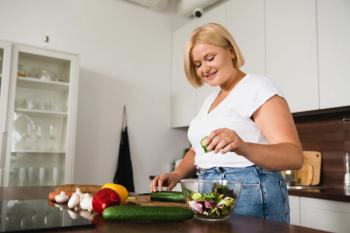
CurCousin, the new synthetic turmeric molecule from Sabinsa, supports metabolic health: Natural Products Expo West 2022 report
Bringing a nature-identical turmeric molecule to market is a first for Sabinsa.
Sabinsa (East Windsor, NJ) is known for its research and development in turmeric. In addition to the firm’s flagship, research-leading Curcumin C3 Complex ingredient, it’s brought to market such innovations as Curcumin C3 Reduct (introducing tetrahydrocurcuminoids and a “colorless” curcumin solution that also recently gained the first
CurCousin’s turmeric analog is cabelin A. At Expo West, Ahmed Khan, Sabinsa’s national sales manager, explained that curcuminoids, and now cabelin A, are so far the only constituents of turmeric that have been studied for metabolic health benefits. (Sabinsa’s Curcumin C3 Complex has already been studied for its effects on triglyceride levels and type 2 diabetes.)
So far, Khan said, “Cabelin A has been studied on cell lines as well as in human clinical studies to find whether it works on the adipose tissues to reduce fat cells. We’ve found that it not only works on the fat cells but that it also brings down cholesterol levels and has effects on triglycerides. So that is why we’re promoting CurCousin for healthy metabolism rather than just for weight loss or weight management.”
The reason Sabinsa produces CurCousin synthetically is that cabelin A is naturally present in turmeric in such small amount that it’s prohibitive to extract from the plant alone. “This molecule has been found to be present in a very, very miniscule quantity of less than 0.001% in turmeric root,” Khan explained. “Since the sustainability of this molecule is very difficult [and] would require hundreds of thousands of tons of [turmeric] material for just 100 kilos of cabelin A, our team developed this synthetic method to isolate the molecule from turmeric root.” The final ingredient is a cabelin A molecule with 99% purity. Sabinsa holds 65 patents on the ingredient in the U.S. and internationally, he said.
Bringing a nature-identical turmeric molecule to market is a first for Sabinsa. But it’s not necessarily a surprise. Sabinsa has devoted itself to studying turmeric and teasing out previously unstudied elements, CurCousin being just the latest.
“There are many other discoveries to be made for turmeric—of different mechanisms of action and also of different molecules,” Khan said. “We are still studying the different molecules in turmeric roots, and when the time comes, we will definitely launch another molecule as well.”
The wide swath of consumers already familiar with turmeric may be excited to learn that there are more health-promoting constituents still being discovered in the plant. “It’s a brand-new ingredient, and we think that in one or two months, sales will pick up for this ingredient,” Khan said.
Newsletter
From ingredient science to consumer trends, get the intel you need to stay competitive in the nutrition space—subscribe now to Nutritional Outlook.





